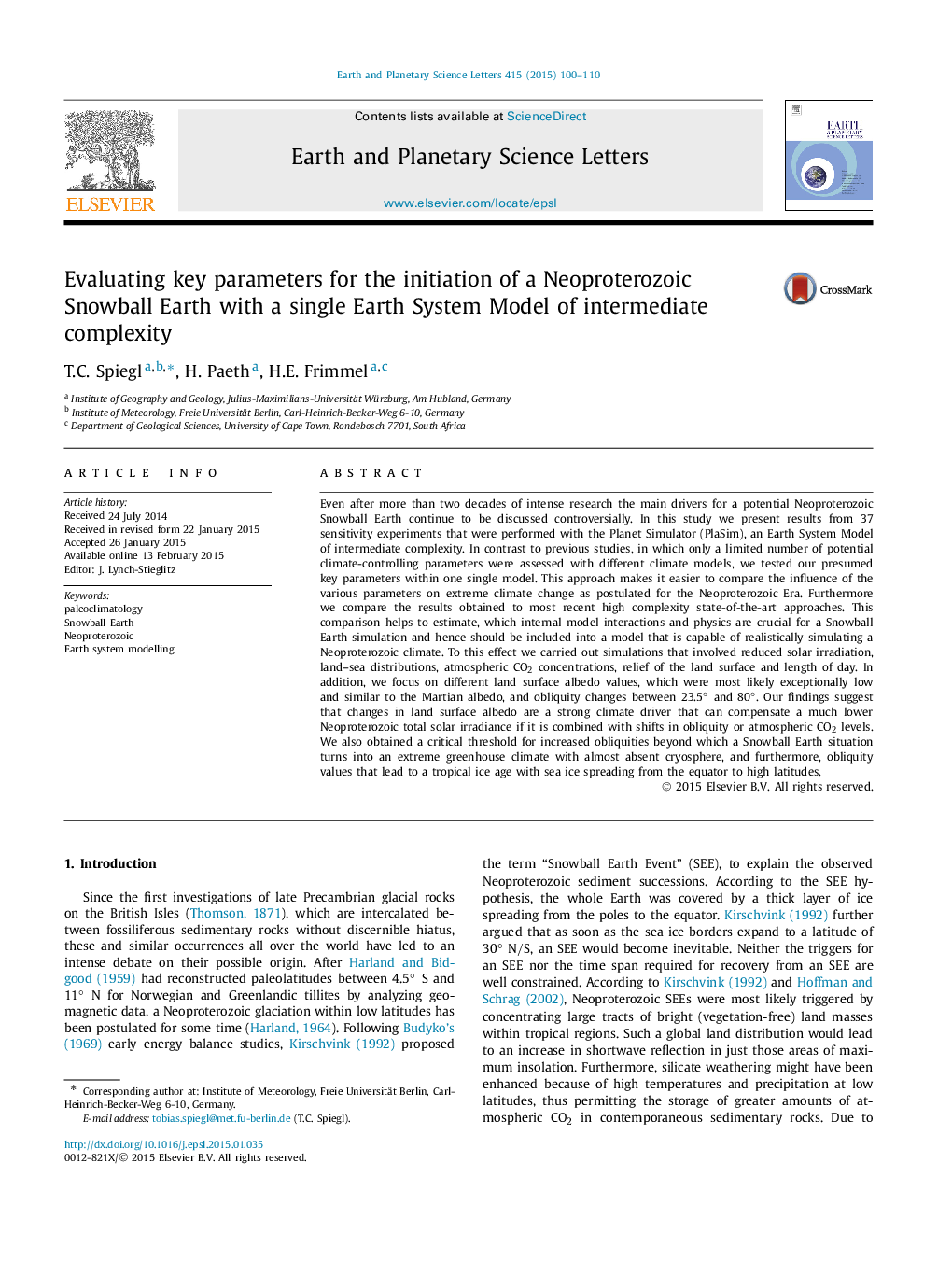| کد مقاله | کد نشریه | سال انتشار | مقاله انگلیسی | نسخه تمام متن |
|---|---|---|---|---|
| 6428542 | 1634741 | 2015 | 11 صفحه PDF | دانلود رایگان |

- Surface albedo was found to be a critical parameter in the simulation of an SEE.
- A TSI of 94% always produced an SEE, if CO2 and obliquity was kept at current values.
- Obliquites between 50°-70° and a TSI of 94% produced a greenhouse climate.
- Angles between 60°-80° reversed climate zones and produced sea ice in the tropics.
Even after more than two decades of intense research the main drivers for a potential Neoproterozoic Snowball Earth continue to be discussed controversially. In this study we present results from 37 sensitivity experiments that were performed with the Planet Simulator (PlaSim), an Earth System Model of intermediate complexity. In contrast to previous studies, in which only a limited number of potential climate-controlling parameters were assessed with different climate models, we tested our presumed key parameters within one single model. This approach makes it easier to compare the influence of the various parameters on extreme climate change as postulated for the Neoproterozoic Era. Furthermore we compare the results obtained to most recent high complexity state-of-the-art approaches. This comparison helps to estimate, which internal model interactions and physics are crucial for a Snowball Earth simulation and hence should be included into a model that is capable of realistically simulating a Neoproterozoic climate. To this effect we carried out simulations that involved reduced solar irradiation, land-sea distributions, atmospheric CO2 concentrations, relief of the land surface and length of day. In addition, we focus on different land surface albedo values, which were most likely exceptionally low and similar to the Martian albedo, and obliquity changes between 23.5° and 80°. Our findings suggest that changes in land surface albedo are a strong climate driver that can compensate a much lower Neoproterozoic total solar irradiance if it is combined with shifts in obliquity or atmospheric CO2 levels. We also obtained a critical threshold for increased obliquities beyond which a Snowball Earth situation turns into an extreme greenhouse climate with almost absent cryosphere, and furthermore, obliquity values that lead to a tropical ice age with sea ice spreading from the equator to high latitudes.
Journal: Earth and Planetary Science Letters - Volume 415, 1 April 2015, Pages 100-110